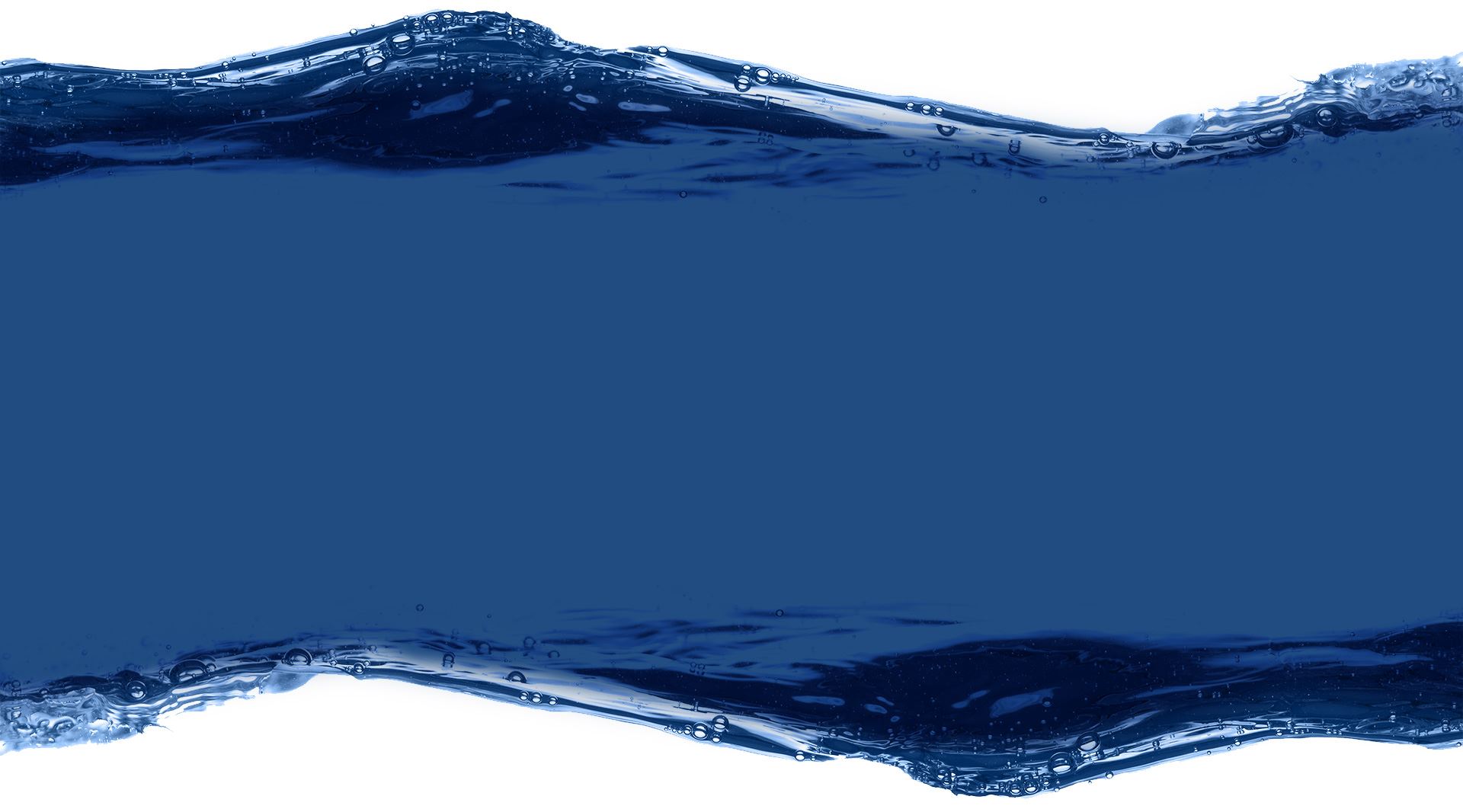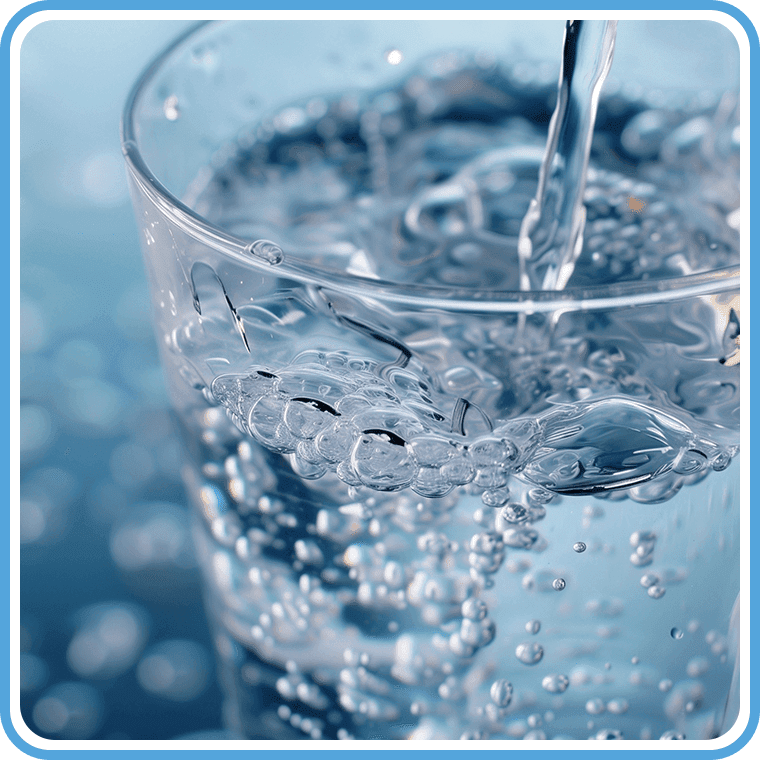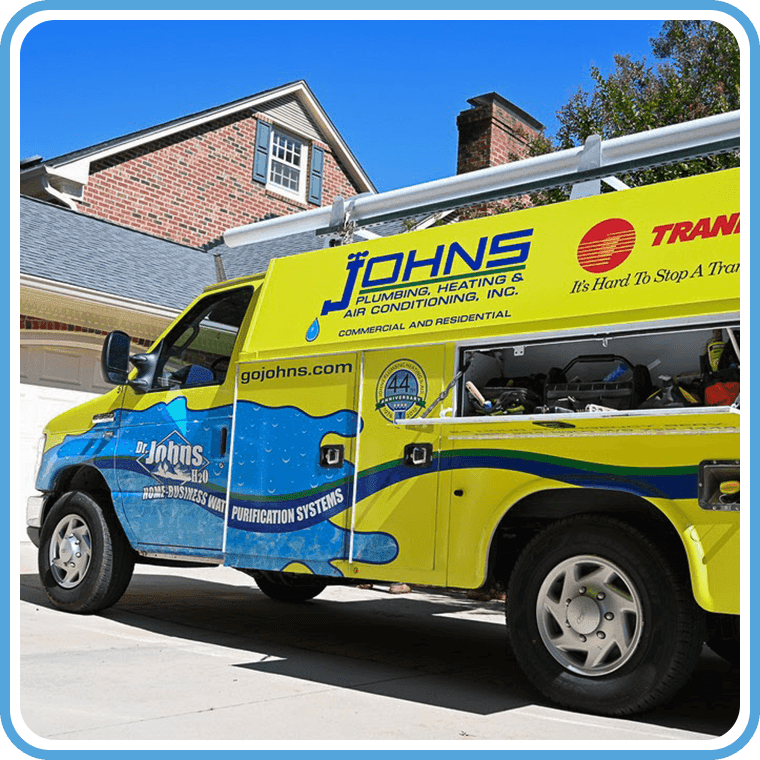
Chloramine-Reducing Systems in Greensboro, North Carolina
Non-Electric, High-Performance Water Conditioning Systems for Customers in The Triad
Chloramine can be a challenging contaminant to tackle, but Dr. Johns H2O Water Purification is here to help you take the guesswork out of water quality. Our advanced chloramine-reducing treatment systems are designed to provide effective and reliable solutions for homeowners looking to improve their water.
At Dr. Johns, we believe in making water treatment straightforward and accessible for everyone in our community. Our non-electric, high-performance chloramine-reducing systems are engineered for efficiency and ease of use, requiring minimal maintenance while delivering maximum results. Whether you’re cooking, drinking, or bathing, our systems can help make sure that you and your family have access to water of the highest quality.
What Is Chloramine?
Chloramine is a combination of chlorine and ammonia used by municipal water treatment facilities to disinfect drinking water. Unlike chlorine, chloramine is more stable, staying in the water distribution system longer and providing ongoing protection against bacterial growth. While it effectively keeps water safe from pathogens, chloramine can enter your water supply and eventually reach your home’s faucets.

Hear From Happy Customers
We Purify Your Water With Care!
-
"On-Time & Worked Hard"Dr. Johns rocks. They were on time and worked very hard to get me taken care of. They looked at different ways to run the water line so that I was able to have clean water for my home and family. Thank you for all your hard work!- Kristy C.
-
"Great Experience"Dr. Johns offered us several options to solve our specific water issues. We had them back out within the week to get everything installed. It's been so nice not having to worry about what's in our water. Overall a great experience!- Daley J.
-
"Excellent System"Excellent system! It's almost been a year since we had our water filter installed. We have a well with lots of sediment. This system improves our water and saves our appliances. The staff has always been friendly, courteous, and knowledgeable.- Dana H.
-
"Nice People"Always real nice people when Dr. Johns comes by!- Percy R.
-
"Highly Recommend"I would recommend everyone use Dr. Johns for water treatment. We are also planning to hire Johns to do yearly maintenance on our furnace and air conditioner!- Ruth Y.
-
"Above & Beyond Service"This is an excellent company that stands by its products and services. Jason went out of his way to help me when my water dispenser broke right before its warranty date. He contacted the manufacturer and replaced my water cooler. I am so glad I picked Dr.- Ruthie K.
How Our Non-Electric Chloramine-Reducing Systems Work
Our non-electric chloramine-reducing systems from Kinetico use a sophisticated filtration process that doesn’t rely on any electrical components, making them easy to maintain and reliable. These systems primarily feature high-quality catalytic carbon filters specifically designed to target chloramine molecules. As water passes through these filters, the catalytic carbon breaks the bond between chlorine and ammonia, effectively neutralizing the chloramine.
Our non-electric systems are user-friendly and designed to integrate seamlessly with your existing plumbing setup. They require minimal maintenance, with the primary task being an occasional replacement of the catalytic carbon filters, which typically last several years. This means you can enjoy consistently high-quality water without the hassle of frequent upkeep. Non-electric systems are also eco-friendly, as they do not consume energy, reducing your household’s carbon footprint.
Learn more about our Kietico chloramine-reducing products by calling Dr. Jons at (336) 560-9540!


Combine Your Chloramine-Reducing System with Other Water Treatment Products
One of the biggest highlights of our chloramine-reducing systems is their ability to work seamlessly alongside other treatment products for comprehensive home water purification. One such product is a water softener, which specifically addresses the issue of hard water. Hard water contains high levels of calcium and magnesium, which can lead to scale build-up in your pipes and appliances. Installing a water softener alongside your chloramine-reducing system can prevent these minerals from impacting your daily life.
Another valuable addition to your water treatment setup is a dedicated sediment filter. Sediment filters remove larger particles such as sand, rust, and dirt from your water supply. Placing a sediment filter as the first line of defense protects your chloramine-reducing system and other treatment devices from getting clogged with debris.
Ready to make a chloramine-reducing system part of your water treatment setup? Call Dr. Johns at (336) 560-9540 or contact us online to request service anywhere in the Triad!


-
Blog
-
FAQ
-
Financing
-
Service Area